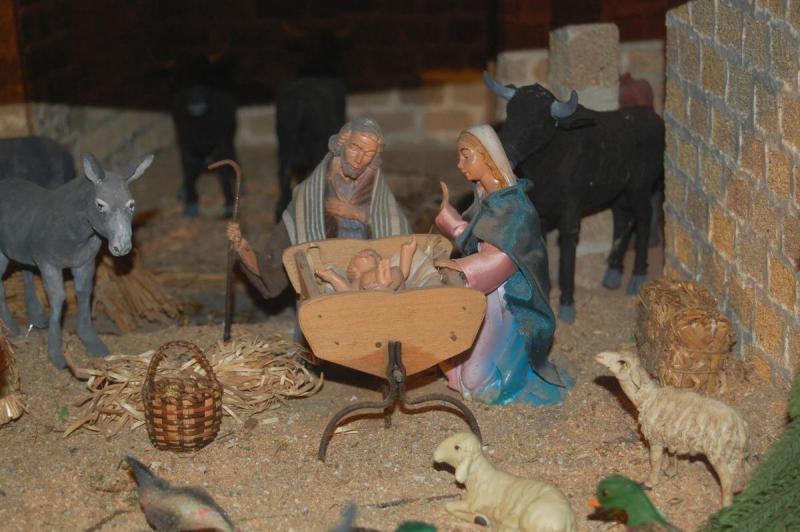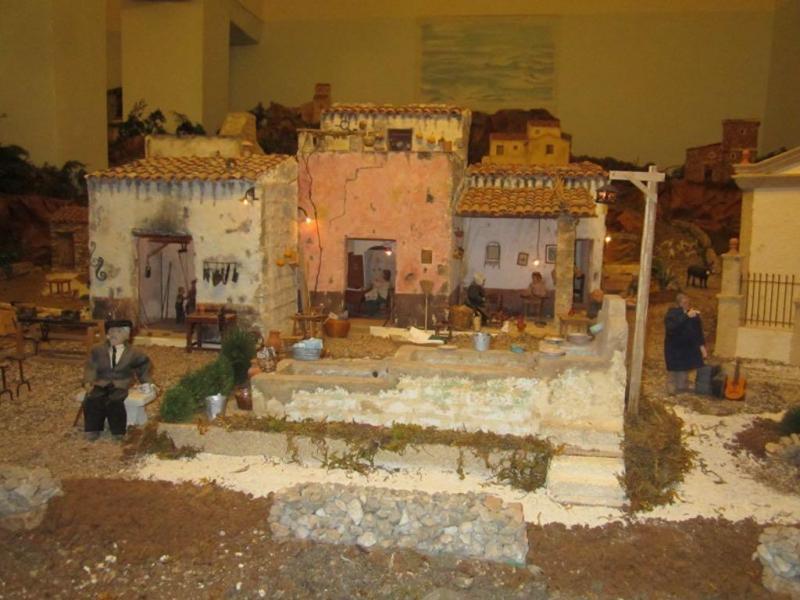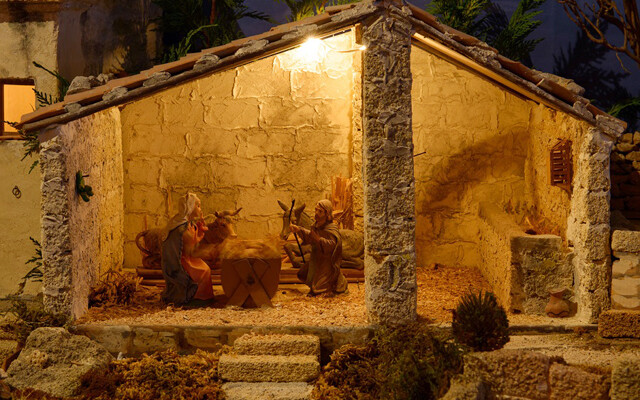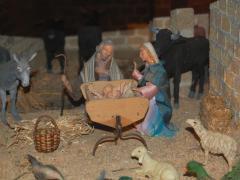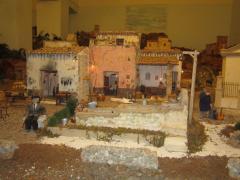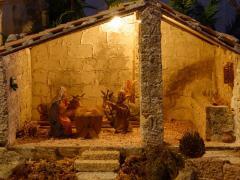Self-propelled nativity scene by Giacomo Randazzo
Street View (if present)
Description
Self-propelled nativity scene by Giacomo Randazzo
Property included in the Register of Intangible Heritage of Sicily (REIS)
----------------
Technical sheet prepared by: Region of Sicily - Department of cultural heritage and Sicilian identity - CRicd: Regional center for inventory, cataloging and documentation and Sicilian regional film library
N. Prog. 77
Well: Self-propelled nativity scene by Giacomo Randazzo
Book: REI - Book of celebrations
Approval date: 12-03-2007
Category: Artisan technique
Province: Palermo
Municipality: Cinisi
Chronological News
Giacomo Randazzo was born in 1952 in Cinisi, where he still lives with his family. In 1974 he graduated as a chemical expert but a few years later he joined his father, a blacksmith, working in his artisan workshop. Here he also finds inspiration for artistic creations starting from processing waste which he transforms, assembling them together, into abstract sculptures. As a child he observed his father who passionately made his nativity scene by hand which, due to the delicacy of the elements of which it was composed, he was forbidden to touch, nor could he get near it. He therefore envied his friends who, on the other hand, could actively participate in the creation of the nativity scene at home. In 1986, at the age of 33, on the occasion of the birth of his first daughter, as a gift for the new arrival, he created his first little house. Since then he has slowly begun to materialize the idea of building a miniature Cinisi: this is how the self-propelled artistic nativity scene is born.
Description
Created for the first time in 1955 by the artist's father (Lorenzo), the nativity scene, which since 1988 is shown annually on the occasion of Christmas, at the premises of the Municipality of Cinisi, is the result of the creation of Giacomo Randazzo (he made it starting from 1986). Thus he follows in his father's footsteps but improves the construction of the houses that make up the urban landscape represented by trying to reproduce a glimpse, as faithful as possible, of the Cinisi of the past. In his crib, in fact, the houses, reproduced on a scale of 1:10, are made of masonry, plastered in white; in some the plaster is degraded, fractured and reveals the underlying tuff ashlars; the roofs reproduce the covering and the gutters in Sicilian tiles. Inside each small building, the rooms are furnished, the shelves and tables full of everyday objects. Even the Mother Church of Cinisi is reproduced revealing, from the opening of the entrance, the entire architectural and decorative interior (the pilasters and frames, the paintings) and the faithful seated between the pews.
Everything is made using the same materials of the royal town (such as tuff, stone, wood, terracotta) thus reproducing a glimpse of daily life between characters intent on their trades. The result, the fruit of a meticulous research on the traditions and ancient crafts of Sicily, is the reproduction of the peasant and urban environment of Sicily after World War II where the main economic resources were represented by agriculture and livestock. The artist is thus able to pass on the vision of an everyday life that has now disappeared, albeit in miniature. The characters (16 cm high) who animate the nativity scene, that is, the carpenter, the blacksmith, the embroiderer, the shoemaker, the ricotta, the miller, to name a few, can be recognized by their gestures and by the carefully reconstructed shops, in which the faithful reproductions of the tools of the trade find their place. The crib is called self-propelled, since the wooden statuettes are equipped with mechanized movements made by means of joints between the joints: for example, in the reproduction of the carpenter's arm, only 7 cm long, there are five joints placed near the shoulder , arm, elbow, forearm and wrist, so that the movement feels as realistic as possible. So they are connected to mechanical gears and electrical wires. Even the statuette representing the sexton reproduces the gesture of ringing the bells; the Sicilian cart runs through the streets of the reproduced scenographic apparatus and, in the classic nativity scene, the Madonna cradles the Baby Jesus. The clothes that dress the statuettes are in fabric and handmade. Year after year the crib has been enriched and continues to be enriched with new characters, new professions and new environments.
Footnotes
The self-propelled nativity scene by Giacomo Randazzo has been presented in various exhibitions and in various competitions, receiving numerous awards for the richness of the details reproduced in miniature and the particularity of the mechanical movements. For example, the following awards are mentioned:
- National Nativity Prize I edition "Praesepium Italiae" 1994/95: Extraordinary Prize for outstanding crib merits;
- Regional Nativity Award VIII edition "Praesepium Siciliae" 1995/96: Award of the Best Animated-Mechanical Crib in Sicily for the large "animated-mechanical" Crib, complete, harmonic and "animated" image of the Praesepium Siciliae ";
-National Nativity Prize II edition "Praesepium Italiae" 1995/96: PSpecial remio for the exceptional and grandiose crib by Giacomo Randazzo. Some “groups” and nativity scenes are of great artistic and technical value.
Author Profile: Mariangela Riggio
Go to Google Maps
Send a notice to the publisher
[contact-form-7 id="18385"]

